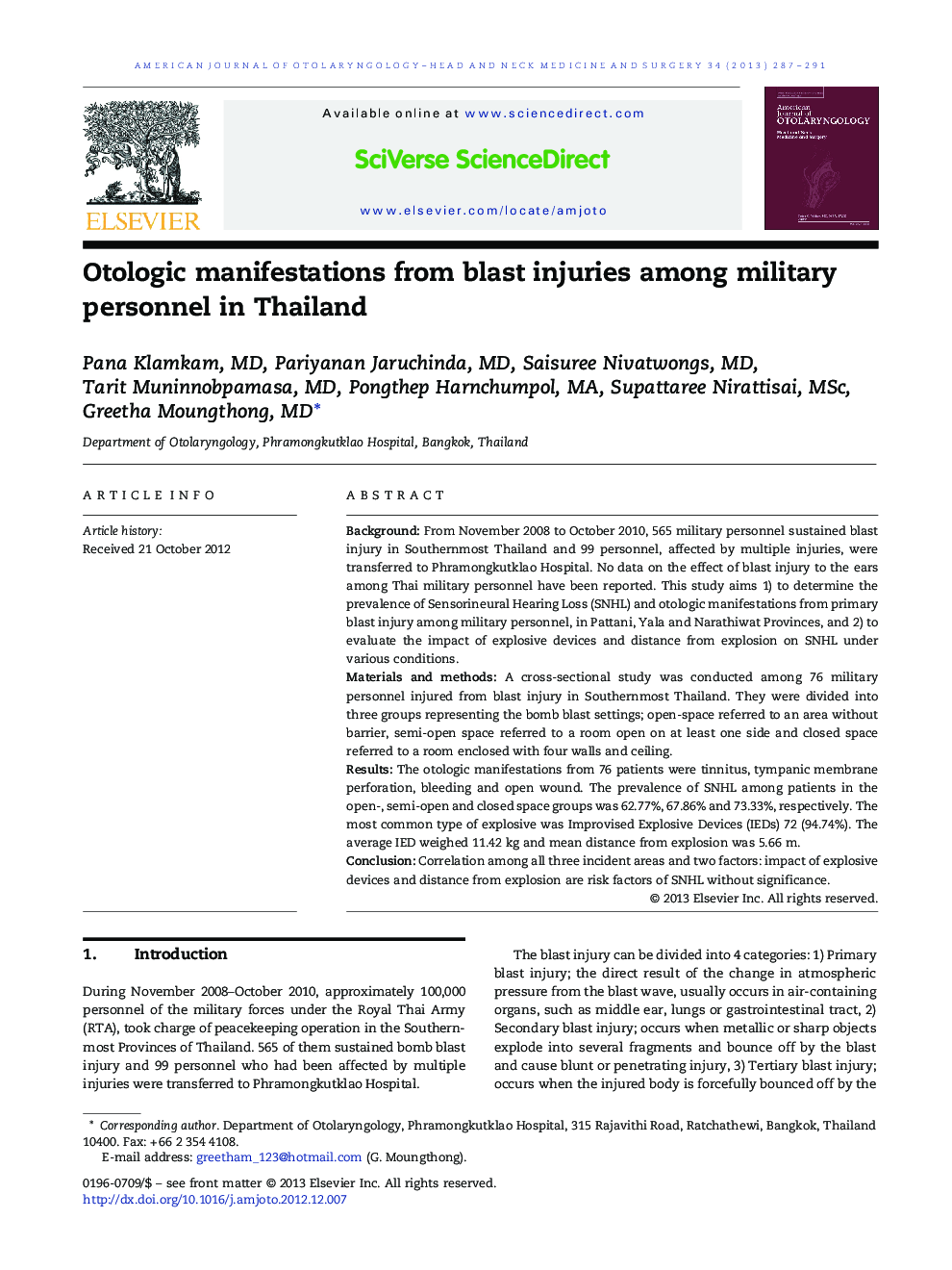| Article ID | Journal | Published Year | Pages | File Type |
|---|---|---|---|---|
| 4103407 | American Journal of Otolaryngology | 2013 | 5 Pages |
BackgroundFrom November 2008 to October 2010, 565 military personnel sustained blast injury in Southernmost Thailand and 99 personnel, affected by multiple injuries, were transferred to Phramongkutklao Hospital. No data on the effect of blast injury to the ears among Thai military personnel have been reported. This study aims 1) to determine the prevalence of Sensorineural Hearing Loss (SNHL) and otologic manifestations from primary blast injury among military personnel, in Pattani, Yala and Narathiwat Provinces, and 2) to evaluate the impact of explosive devices and distance from explosion on SNHL under various conditions.Materials and methodsA cross-sectional study was conducted among 76 military personnel injured from blast injury in Southernmost Thailand. They were divided into three groups representing the bomb blast settings; open-space referred to an area without barrier, semi-open space referred to a room open on at least one side and closed space referred to a room enclosed with four walls and ceiling.ResultsThe otologic manifestations from 76 patients were tinnitus, tympanic membrane perforation, bleeding and open wound. The prevalence of SNHL among patients in the open-, semi-open and closed space groups was 62.77%, 67.86% and 73.33%, respectively. The most common type of explosive was Improvised Explosive Devices (IEDs) 72 (94.74%). The average IED weighed 11.42 kg and mean distance from explosion was 5.66 m.ConclusionCorrelation among all three incident areas and two factors: impact of explosive devices and distance from explosion are risk factors of SNHL without significance.
